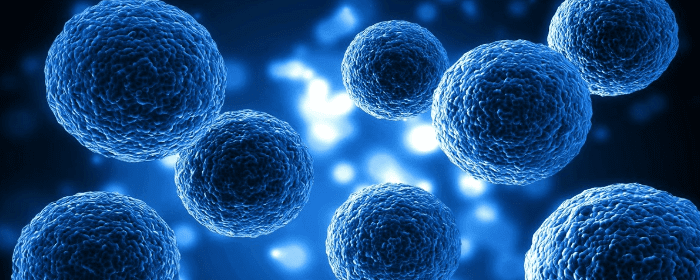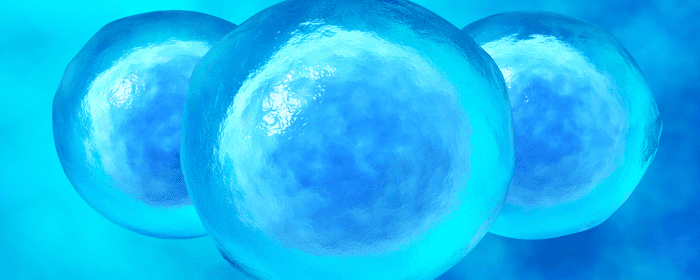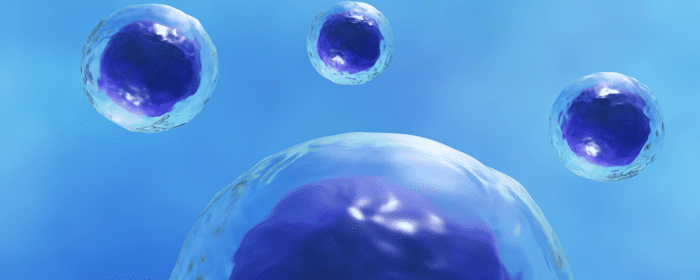
by admin | Feb 22, 2024 | Spinal Cord Injury, Adipose, Mesenchymal Stem Cells, Stem Cell Research, Stem Cell Therapy
With more than 17,000 people in the US sustaining a spinal cord injury (SCI) each year and an estimated combined cost to healthcare and the workforce exceeding $40 billion, the condition has significant personal and socioeconomic implications. In addition, SCIs have limited pharmacological treatment options to support the regeneration of nerve damage.
Considering the limited treatment options for this condition, the field of regenerative medicine, and specifically the use of stem cells, has recently drawn interest as a potential therapeutic treatment option for paralysis resulting from SCIs.
In this report, Bydon et al. summarize findings of the ongoing multidisciplinary phase 1 clinical trial exploring the safety and efficacy of intrathecal autologous adipose tissue-derived (AD) mesenchymal stem cells (MSCs) in patients with blunt, traumatic SCI.
Specifically, as part of this report, the authors describe the outcome of the first patient with C3-4 SCI treated with AD-MSCs. At the time of SCI, neurologic examination revealed complete loss of motor and sensory function below the level of injury; an injury diagnosed as an American Spinal Injury Association (ASIA) grade A SCI.
After undergoing initial treatment, including C2-6 posterior cervical decompression and fusion, improvement in motor and sensory function was demonstrable. However, neurological gains plateaued 6 months after sustaining injury.
Upon enrollment into the CELLTOP clinical trial 9 months after injury, the patient’s neurologic status was found to be ASIA grade C and imaging revealed bilateral myelomalacia at the C3 level and at the C2-6 decompression and fusion. Additionally, an open biopsy of adipose tissue found in the abdominal wall was performed 8 weeks prior to receiving an initial intrathecal injection.
After receiving an intrathecal injection of 100 million autologous AD-MSCs 11 months after injury, the patient was observed for clinical signs of efficacy at 3, 6, 12, and 18 months following injection.
Bydon et al. observed progressive improvement in upper extremity motor scores and considerable improvement in lower extremity scores at 18 months following injection. The patient also demonstrated consistent improvement in ASIA sensory score, including improvements in pinprick and light touch scores at follow-up after 18 months. The authors reported patient improvements in Capabilities of Upper Extremity score, quality of life (as measured by Global Health Score), and in physical and occupational therapy measures. Other than a moderate headache on day 2, no other safety issues or adverse events were reported.
While further clinical trial is required, the authors conclude that intrathecal AD-MSC administration may be a relatively noninvasive and safe therapeutic option for patients with SCI to improve their neurologic status after reaching a ceiling effect in terms of spontaneous recovery.
Source: “First Report From a Phase 1 Trial of Autologous Adipose Tissue ….” 27 Nov. 2019, https://www.mayoclinicproceedings.org/article/S0025-6196(19)30871-7/fulltext.

by admin | Feb 22, 2024 | ALS, Stem Cell Research, Stem Cell Therapy
Amyotrophic lateral sclerosis (ALS) is a progressive neurodegenerative disease characterized by loss of upper and lower motor neurons resulting in paralysis, respiratory insufficiency, difficulties speaking and swallowing, stiffness and spasticity, and muscle atrophy. Commonly known as Lou Gehrig’s disease, after the baseball player was diagnosed with it, ALS is diagnosed in an estimated 5,000 Americans each year.
Currently, ALS has a median survival time of 4.32 years and no known cure. As part of the effort to develop new therapeutic options to slow the progression of ALS, stem cell (SC) transplantation has shown potential in recent clinical trials.
In this review, Aljabri et al. examine the results of various clinical trials exploring the use of stem cell therapy as a viable therapy for ALS. Specifically, the authors identified six studies determined to have met the established criteria for review.
As part of this research, the authors examined the efficacy of SC transplantation in patients with ALS. Studies examined included a number of routes of administration, including subcutaneous, combined intrathecal and intramuscular, intravenous and intralumbar injections, and intrathecal approach. These studies all demonstrated slower decline or significant improvement as measured on the ALS Functional Rating Scale (ALSFRS-R).
While there appears to be a benefit in this application, the authors of two of the studies did not observe a significant difference in the efficacy between treatment and placebo groups after injections.
Additionally, the authors noted that all three studies using bone marrow mesenchymal stem cells (BM-MSC) demonstrated a significant decrease in the progression of disease burden and an overall slower decline in the ALSFRS-R score. On the other hand, studies that used granulocyte colony-stimulating factor (G-CSF) did not demonstrate a significant benefit.
While these results are promising, the authors point out limitations of the study that make it difficult to identify the long-term effects and long-term benefits associated with SC therapy. These limitations include short follow-up periods of either 6 or 12 months and the loss of patients during follow-up, both of which compromise the ability to determine long-term benefits and effects with fidelity.
Aljabri et al. also highlights many challenges associated with the introduction of SCs into the CNS. Among these challenges include the increased risk of AEs associated with the multiple SC injections required to deliver therapeutic doses and determining the most appropriate route of injection for therapeutic benefits.
The authors conclude that early clinical trials have made great progress in delineating the safety of SC therapy in the treatment of ALS. What remains to be determined is how effective SCs are compared to other forms of therapy. While the current data of SC therapy hold great promise, more properly designed clinical trials are needed to verify their benefit.
Source: Aljabri A, Halawani A, Bin Lajdam G, Labban S, Alshehri S and Felemban R (2021) The Safety and Efficacy of Stem Cell Therapy as an Emerging Therapy for ALS: A Systematic Review of Controlled Clinical Trials. Front. Neurol. 12:783122. doi: 10.3389/fneur.2021.783122

by Stemedix | Feb 19, 2024 | COPD, Pulmonary Fibrosis, Stem Cell Research, Stem Cell Therapy, Studies
Chronic obstructive pulmonary disease affects 16 million adults in the United States, according to the National Heart, Lung, and Blood Institute. COPD refers to two main conditions — chronic bronchitis and emphysema. If you’ve received a COPD diagnosis, it can be tough to know what to expect from the disease as it progresses. For many people, one of the leading questions is whether COPD can be reversed. Learn more about this disease and what kind of treatments offer promising results.
Symptoms of Chronic Obstructive Pulmonary Disease
COPD occurs because of damage to the airways or other parts of the lungs, blocking airflow and making it more difficult to breathe. Both chronic bronchitis and emphysema can lead to the development of COPD.
Chronic bronchitis affects your bronchial tubes, which carry air to and from your lungs. Bronchitis irritates these tubes, leading to the production of mucus that narrows the tube’s opening, making it much harder to breathe.
Usually, hair-like structures called cilia move mucus out of your airways, but the irritation from bronchitis damages the cilia.
Emphysema is a condition that affects the air sacs at the end of the bronchial tubes. These air sacs assist in the transfer of oxygen into your blood and carbon dioxide out. Emphysema destroys the walls of these sacs, making it tough to get a breath.
COPD can cause symptoms that include:
- Shortness of breath
- Chest heaviness or tightness
- Fatigue
- Ongoing cough
- Whistling or wheezing when you breathe
- Cough with mucus
Not everyone who has COPD experiences all of these symptoms.
Causes of COPD
One of the biggest risk factors of COPD is smoking. The majority of people who have COPD smoke or has a history of smoking. If you have a family history of COPD, you are more likely to develop it if you smoke. Smoke irritates the airways, causing inflammation while also damaging the cilia that moves mucus.
If you’ve suffered long-term exposure to other lung irritants, you could also be at risk. Irritants can be chemical fumes, dust, air pollution, smoke from home cooking, and heating fuel. Secondhand smoke can also be a factor.
Your age is also a consideration if you have other risk factors. Most people who have COPD are at least 40.
Infections like tuberculosis and HIV also put you at risk. If you have asthma, you also could experience COPD.
One of the potential genetic causes of COPD is a condition called alpha-1 antitrypsin (AAT) deficiency. If you have this condition, long-term exposure to fumes or smoking can result in lung damage, leading to COPD. AAT deficiency makes it easier to develop the disease earlier in life.
Treatment of COPD: Managing Symptoms
Treating COPD means finding ways of decreasing symptoms. The first thing you have to do is to quit smoking if you’re still engaged in this habit. Continuing to smoke as you deal with COPD will only make the condition worse.
Bronchodilators and steroids are options that can help with symptoms. If you have mild COPD, your doctor may prescribe short-acting bronchodilators that you use only when you experience symptoms. These bronchodilators relax the muscles around the airways.
If you have a more severe case of COPD, you may need to take bronchodilators every day. In some instances, your doctor may prescribe them along with steroids.
Can COPD Be Reversed? For some people, pulmonary rehabilitation is helpful. This option includes exercise training and breathing techniques to help you better manage the symptoms.
Oxygen therapy is another option. You receive supplemental oxygen from tubes that rest in your nose, a face mask, or a tube that goes into your windpipe.
Surgery is generally only done in people with severe COPD that doesn’t respond to other treatment options. There are a few different types of surgeries. Getting a lung transplant is another option, though it is even rarer than surgery.
Slowing the Progression of COPD: Promising Options
Although it’s not yet possible to reverse the conditions, it can be possible to slow down the progression of COPD. The first step is to get an early diagnosis and intervention. If you suspect you have COPD, it’s important to ask your doctor for a spirometry test.
If you have a family history of the condition or have smoked for a long time, it can help to get a test even if you don’t have symptoms.
It can also be helpful to learn both diaphragmatic breathing and pursed-lip breathing. Diaphragmatic breathing stimulates relaxation and increases oxygen saturation while also reducing the amount of air trapped in your lungs. Pursed-lip breathing, on the other hand, offers quick relief for someone experiencing shortness of breath and wheezing.
You will also need to avoid environmental triggers. These triggers can include air pollutants, extreme temperature changes, smoke, and strenuous activities.
Additionally, stem cell therapy offers the chance to slow down the progression of COPD. It uses stem cells to stimulate your body to start healing itself. It could speed up your lungs’ ability to heal themselves.
Stem cell therapy can also be helpful in preventing inflammation by assisting you in producing anti-inflammatory molecules.
One of the best things about stem cell therapy and other regenerative medicine options is that it’s minimally invasive and doesn’t require a long recovery process. You also don’t have to worry about side effects or rejections.
Living With COPD: Choosing the Best Treatment Strategies
Once your lungs suffer the kind of damage COPD causes, reversing the condition is usually not an option. However, this doesn’t mean you can’t improve your symptoms and even dramatically slow down the disease’s progression.
Can COPD be reversed? By turning to the right treatment options and making the necessary lifestyle changes, It’s possible to start seeing positive changes.
Stem cell therapy is an option that offers the chance to help your body heal itself, even if not entirely. A combination of treatments can be the most effective way of dealing with COPD, so make sure to speak with a specialist on your treatment options.

by admin | Feb 15, 2024 | Osteoarthritis, Exosomes, Extracellular Vesicles, Mesenchymal Stem Cells, Stem Cell Research, Stem Cell Therapy
Osteoarthritis (OA) is the most common form of arthritis and is estimated to affect nearly 365 million people worldwide. Characterized as an inflammatory disease, OA slowly progresses over time and results in the gradual loss of the protective cartilage found on the ends of the bones.
While the specific cause of OA has yet to be determined, a growing body of evidence suggests the chondrocyte inflammatory response resulting from elevated levels of pro-inflammatory cytokines is a critical factor in the development and progression of OA.
Recent evidence also suggests that mesenchymal stem cell-derived exomes (MSCs-Exos) exhibit beneficial anti-inflammatory responses in several inflammatory diseases, including OA.
In this study, Wang et al. explore the role of human umbilical cord-derived MSCs-Exos (hUC-MSCs-Exos) in treating the inflammation of chondrocytes and its related mechanisms.
As part of this study, the authors report that supplementing the observed chondrocyte inflammation models with hUC-MSCs-Exos demonstrated the ability to reduce the inflammation of chondrocytes caused by the inflammatory factor IL-1β.
Additionally, activation and polarization of synovial macrophages to M1 phenotypes also contribute to the progression of OS. As part of this study, Wang et al. report that hUC-MSC-Exos demonstrated a protective effect against M1 macrophage-induced chondrocyte damage and cell death.
Wang et al. indicate that the results of this study confirm the anti-inflammatory effects of hUC-MSCs-Exos in the human articular chondrocytes inflammation model. The authors also conclude that hUC-MSCs-Exos may be used as a potential cell-free treatment for chondrocyte inflammation in OA.
Source: Wang S, Jiang W, Lv S, et al. Human umbilical cord mesenchymal stem cells-derived exosomes exert anti-inflammatory effects on osteoarthritis chondrocytes. Aging (Albany NY). 2023;15(18):9544-9560. doi:10.18632/aging.205034

by Stemedix | Feb 12, 2024 | Age Management, Health Awareness, Osteoarthritis, Pain Management, Regenerative Medicine, Stem Cell Therapy
The National Library of Medicine states that 10% of people over 55 in the United States have disabling knee osteoarthritis. If you are one of these people, finding the right treatment can be challenging, especially if you don’t want to become dependent on pain medications or go through an invasive knee surgery.
For some, surgery can be the only option, but for many others, some management strategies and less invasive options could offer relief from symptoms.
What Is Knee Osteoarthritis? Understanding the Symptoms and Causes
Osteoarthritis of the knee occurs when the cartilage in your knee joint starts to break down. This causes the bones to rub together, leading to stiffness, swelling, and pain that can interfere with your life.
Women are more likely to develop knee osteoarthritis, as are people over the age of 40, but genetics and other factors can cause it in younger people.
Pain is the most common symptom of this condition, but there are other signs, including:
- A puffy or swollen knee
- Hearing a grinding or cracking noise when you move
- Knee stiffness
- Knee that locks up or feels stuck
- Knee that feels wobbly
There can be many causes of knee osteoarthritis. Having a body mass index of 30 or more puts pressure on your knees and can cause inflammation. This inflammation can lead to arthritis or make existing arthritis worse.
You can also develop this condition if you suffer a knee injury or have a prior knee injury. If you have close relatives who’ve had knee osteoarthritis, you’re also more likely to struggle with this problem.
If you frequently put stress on your knees, whether by playing sports or as a result of your job, you can also develop osteoarthritis in your knee.
Treating Knee Osteoarthritis
If you have signs of osteoarthritis, there are a number of treatment options you can talk to your doctor about.
Maintaining a Healthy Weight
If you have risk factors that can increase your chances of developing knee osteoarthritis or if you already have the condition, ensuring your weight is healthy is vital. The Arthritis Foundation states that being just 10 pounds overweight can put 15 to 50 pounds of extra weight on your knees. That makes the development of osteoarthritis more likely.
Losing weight allows you to reduce some of that strain on your knee joints. Aside from that, losing weight also helps reduce inflammation throughout the body, which can help with arthritis.
Getting Regular Exercise
Those who have knee osteoarthritis can also benefit from getting regular exercise. It can help you lose weight, increase your mobility, and build up muscle strength to support your knee joints.
It is important to choose low-impact aerobics options that are suitable for your health level. These can include:
- Swimming
- Cycling
- Yoga
- Stretching
- Walking
Riding a stationary bike can be very helpful for maintaining strength in the hamstring muscle groups without putting extra pressure on your knee. It’s best to have a doctor or physical therapist at your side to help you put together an exercise plan.
Using Medications for Pain and Swelling Relief
For people who are dealing with a lot of pain and swelling, one option is to turn to medications. Over-the-counter painkillers are one option, and many of them offer anti-inflammatory properties that help with the swelling that might be impeding you from moving freely.
Non-steroidal anti-inflammatory drugs (NSAIDs) like ibuprofen, as well as acetaminophen for those who can’t take NSAIDs, can be helpful for osteoarthritis pain.
If these aren’t effective, there are prescription options your doctor could recommend. These may include opioids and even injectable steroids for people with severe inflammation.
Prescription medications can cause side effects. Because they don’t actually do anything to heal your body and only help you manage the symptoms of knee osteoarthritis, the moment you stop taking them, the pain and inflammation will usually return.
Turning to Regenerative Medicine
One promising option for the treatment of knee osteoarthritis is regenerative medicine. It is a field of medicine that strives to harness the body’s natural healing powers to make them work in the areas where you need them most. There are a number of treatments, including platelet-rich plasma therapy and stem cell therapy.
Platelet-rich plasma (PRP) therapy uses the platelets in your blood, which have clotting abilities and can stimulate many healing processes.
By separating the platelets from the other components in your blood, like white blood cells, red blood cells, and more, and concentrating them in the liquid portion of your blood, you can give the treatment area a boost of growth factors. These growth factors encourage the healing process.
Stem cell therapy uses stem cells gathered from your fat or bone marrow to stimulate the regeneration of damaged tissue. Stem cells have endless regenerative powers, and they’re able to transform into the exact type of cells you need.
Regenerative medicine offers the chance to decrease inflammation in the area, allowing blood to flow more freely and bring with it oxygen and nutrients. Less inflammation can also mean less pain because you aren’t putting as much pressure on nearby nerves.
Another benefit of regenerative medicine is that it is minimally invasive, so you don’t have to worry about a long recovery period. Most people are good candidates for this type of procedure as well.
Choosing Surgery
In severe cases, surgery may be the only way to treat knee osteoarthritis. You can get arthroscopic surgery, which is less invasive because it uses an arthroscope. This is a small camera that guides the surgeon in repairing the damaged area.
A total knee replacement can be another option. It can be done as minimally invasive or open surgery, depending on your overall health.
Stem cell therapy can still apply as a post-surgery option to help speed up recovery and manage inflammation and pain during the healing process.
Getting Relief from Knee Osteoarthritis Symptoms
If you are struggling with knee osteoarthritis, getting relief from the inflammation and pain can mean considering all available treatment options. By turning to your doctor, you can make sure you have the best chance of achieving the help you deserve.

by admin | Feb 8, 2024 | Spinal Cord Injury, Mesenchymal Stem Cells, Stem Cell Research, Stem Cell Therapy
Spinal cord injury is one of the most complicated and serious pathological impairments affecting the central nervous system. Since the human body is unable to regenerate and repair the spinal cord after injury, there is a high likelihood of suffering permanent damage and disability.
Often compounding the issue of SCI, secondary events occurring after the initial injury to the spinal cord significantly reduce cell migration and axonal regrowth and limit repair and regeneration.
Recently, transplantation of mesenchymal stem cells (MSCs) has been shown to promote the repair of injured spinal cord tissues in animal models. However, as Qu and Zhang highlight in this review, there remain many unanswered questions that are essential for improving the effects of this MSC therapy. As such, the authors focus this review on recent information about the behavior and function of MSCs in SCI, the function of biomaterials to direct the behavior of MSCs, and the attempt to emphasize combinational strategies such as tissue engineering for functional improvements of SCI.
There are studies showing that the migratory and homing capacities of MSCs are closely related to their engraftment and regeneration ability. Considering this, the authors highlight the importance of having MSCs migrate and integrate into host spinal cord tissue. Since MSC homing toward injured tissue is not an efficient process, and to ensure a more effective stem cell therapy outcome, it is important that these transplanted cells be introduced in a way that increases the migratory potential of healthy MSCs to the site of injured tissue.
Additionally, while transplanted cells have been identified adjacent to neurons after SCI, the surviving number of grafted and differentiated neurons was too small to be considered to contribute to functional recovery after SCI. However, data suggests that the ability of MSCs to secrete soluble factors or vesicles rather than engrafting and transdifferentiating might serve an important role in SCI repair.
The authors also point to studies that indicate MSC implantation could promote a therapeutic effect and functional recovery in experimental SCI animal models. The authors believe that this is a result of MSCs ability to differentiate into specialized neuronal and glial cell lineages after transplantation. While MSC transplantation has not yet been proven to be an effective and reliable therapy for SCI, additional studies need to be done before the therapy is utilized in clinical applications.
MSCs respond to the local environment in multiple ways and represent the most promising exosomes for neuropathic applications. Qu and Zhang conclude this review by calling for more intensive studies examining the potential benefits of combining MSCs with nerve tissue-engineered scaffolds to direct cell behaviors after SCI, including growth, migration, and differentiation.
Source: “Roles of Mesenchymal Stem Cells in Spinal Cord Injury – Hindawi.” https://www.hindawi.com/journals/sci/2017/5251313/.







 St. Petersburg, Florida
St. Petersburg, Florida
